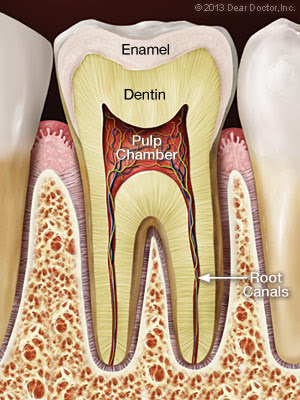Root canal treatment is compulsory when
a tooth has immense pain. The motive of the surgery is to remove the infected
nerves from the tooth’s roots. When there are bacteria left in the tissues of a
tooth, it gives acute trouble and discomfort to a person. In this scenario, the
dentist needs to take out the dead and damaged tissues or nerves from the rootsof a tooth.
A root canal is a painful operation;
however, modern technology has some pain relief options. The advanced treatment
methods give less pain or pain-free procedures to clean and remove the infected
canals. Therefore, new techniques are relatively comfortable. Thus, a patient
needs one or two trips to his dentist for the surgery.
Why and When Does a Person Need Root Canal Treatment?
When there is an infection deep down in
the tissues or canals of a tooth’s roots, then a person needs the root canal treatment. The situation gives acute pain to the patient. The people who do not
care about oral health, suffer more from the disease. If you do not floss and
brush your teeth two times a day, the bacteria in your mouth injure the nerves
and tissues of a tooth. You need antiseptic mouth wash to get rid of saliva and
mouth germs. Moreover, it can create a cavity in your teeth, if you leave it
untreated, it can damage the canals. In some serious cases, endodontists
recommend a tooth extraction.
Therefore, make sure there is no cavity
in your teeth. Do care for your oral health as you care about your other
physical parts. You should not ignore a little pain or signs of the cavity in
the mouth. A root canal is a painful treatment and if you leave it untreated
you might have to face some severe consequences. You can go through another
procedure called endodontic retreatment.
The procedure of Root Canal Treatment
If your endodontist observes any
infected canal or cavity in your mouth, he would recommend the root canal
surgery.
The surgery needs two visits to a dental
clinic. Moreover, it has only four steps of treatment.
The following are the step-by-step
procedure of root canal treatment:
- First, the endodontist will numb the tooth through local anesthesia. He will inject the solution through a needle. The patient will feel the sensation in his gums. After this, the dentist will place a dental dam (a small sheet of rubber), the motive is to detach the tooth and keep it dry. During the procedure, your infected tooth needs loneliness and dryness.
- The second step is the creation of a small opening in the top portion of the infected tooth. The endodontist will use a drill to create a hole. Through the gap, the dentist will remove the infected pulp. He will use small files to take the damaged tissues out. After this, he/she has to reshape the remaining canals or tissues. He will use a file to restore the looks of the nerves. If there is any remaining cavity, the endodontist will wash it away with water. Finally, the dentist will put the antimicrobial solution into the inner chamber to kill the germs and the remaining infection. Moreover, it will reduce the risk of re-growth of disease.
- The third step is the stuffing of the inner chamber. The endodontist will use a gutta-percha (rubber-like material) for filling. Then, the dentist will close the hole through a temporary filling.
- The final step needs a second visit to your dental clinic. After the few weeks of removing, cleaning, and filling of infected canals, the dentist will place a permanent crown on your teeth. Finally, the endodontist will restore the outer shape of the teeth. According to the situation, the dentist can keep a small supporting post inside the root chamber to make the procedure long-lasting.





